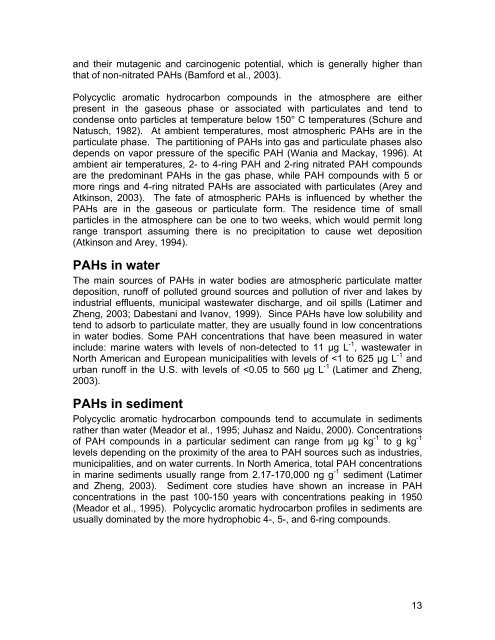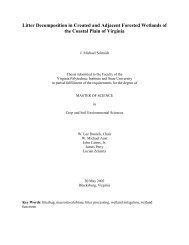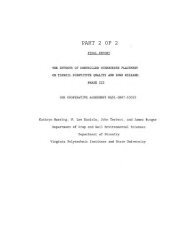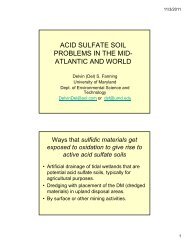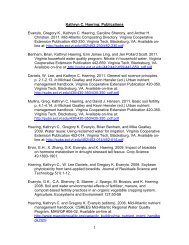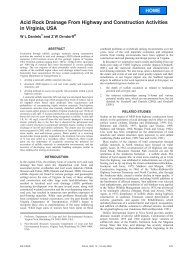Remediation of PAH-Contaminated Soils and Sediments: A ...
Remediation of PAH-Contaminated Soils and Sediments: A ...
Remediation of PAH-Contaminated Soils and Sediments: A ...
Create successful ePaper yourself
Turn your PDF publications into a flip-book with our unique Google optimized e-Paper software.
<strong>and</strong> their mutagenic <strong>and</strong> carcinogenic potential, which is generally higher than<br />
that <strong>of</strong> non-nitrated <strong>PAH</strong>s (Bamford et al., 2003).<br />
Polycyclic aromatic hydrocarbon compounds in the atmosphere are either<br />
present in the gaseous phase or associated with particulates <strong>and</strong> tend to<br />
condense onto particles at temperature below 150° C temperatures (Schure <strong>and</strong><br />
Natusch, 1982). At ambient temperatures, most atmospheric <strong>PAH</strong>s are in the<br />
particulate phase. The partitioning <strong>of</strong> <strong>PAH</strong>s into gas <strong>and</strong> particulate phases also<br />
depends on vapor pressure <strong>of</strong> the specific <strong>PAH</strong> (Wania <strong>and</strong> Mackay, 1996). At<br />
ambient air temperatures, 2- to 4-ring <strong>PAH</strong> <strong>and</strong> 2-ring nitrated <strong>PAH</strong> compounds<br />
are the predominant <strong>PAH</strong>s in the gas phase, while <strong>PAH</strong> compounds with 5 or<br />
more rings <strong>and</strong> 4-ring nitrated <strong>PAH</strong>s are associated with particulates (Arey <strong>and</strong><br />
Atkinson, 2003). The fate <strong>of</strong> atmospheric <strong>PAH</strong>s is influenced by whether the<br />
<strong>PAH</strong>s are in the gaseous or particulate form. The residence time <strong>of</strong> small<br />
particles in the atmosphere can be one to two weeks, which would permit long<br />
range transport assuming there is no precipitation to cause wet deposition<br />
(Atkinson <strong>and</strong> Arey, 1994).<br />
<strong>PAH</strong>s in water<br />
The main sources <strong>of</strong> <strong>PAH</strong>s in water bodies are atmospheric particulate matter<br />
deposition, run<strong>of</strong>f <strong>of</strong> polluted ground sources <strong>and</strong> pollution <strong>of</strong> river <strong>and</strong> lakes by<br />
industrial effluents, municipal wastewater discharge, <strong>and</strong> oil spills (Latimer <strong>and</strong><br />
Zheng, 2003; Dabestani <strong>and</strong> Ivanov, 1999). Since <strong>PAH</strong>s have low solubility <strong>and</strong><br />
tend to adsorb to particulate matter, they are usually found in low concentrations<br />
in water bodies. Some <strong>PAH</strong> concentrations that have been measured in water<br />
include: marine waters with levels <strong>of</strong> non-detected to 11 µg L -1 , wastewater in<br />
North American <strong>and</strong> European municipalities with levels <strong>of</strong>


